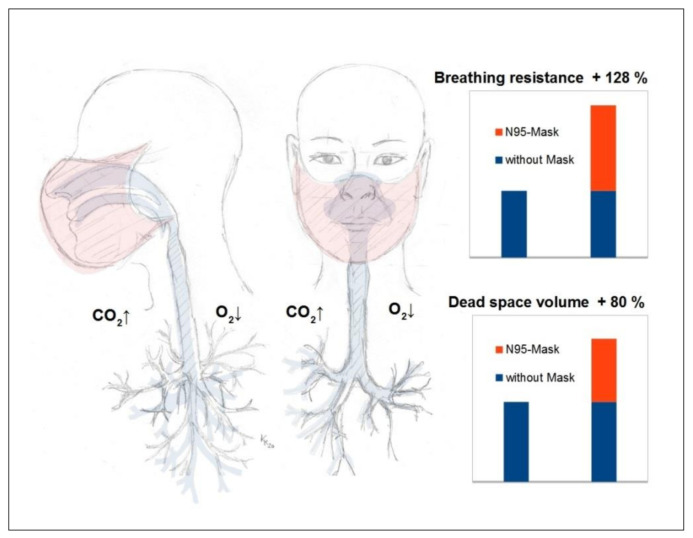Figure 3.
Pathophysiology of the mask (important physical and chemical effects): Illustration of the breathing resistance* and of the dead space volume of an N95 mask in an adult. When breathing, there is an overall significantly reduced possible gas exchange volume of the lungs of minus 37% caused by the mask (Lee 2011) [60] according to a decrease in breathing depth and volume due to the greater breathing resistance of plus128%* (exertion when inhaling greater than when exhaling) and due to the increased dead space volume of plus80%°, which does not participate directly in the gas exchange and is being only partially mixed with the environment. (* = averaged inspiration and expiration according to Lee 2011 [60] including moisture penetration according to Roberge 2010 [61], ** = averaged values according to Xu 2015 [59]).

